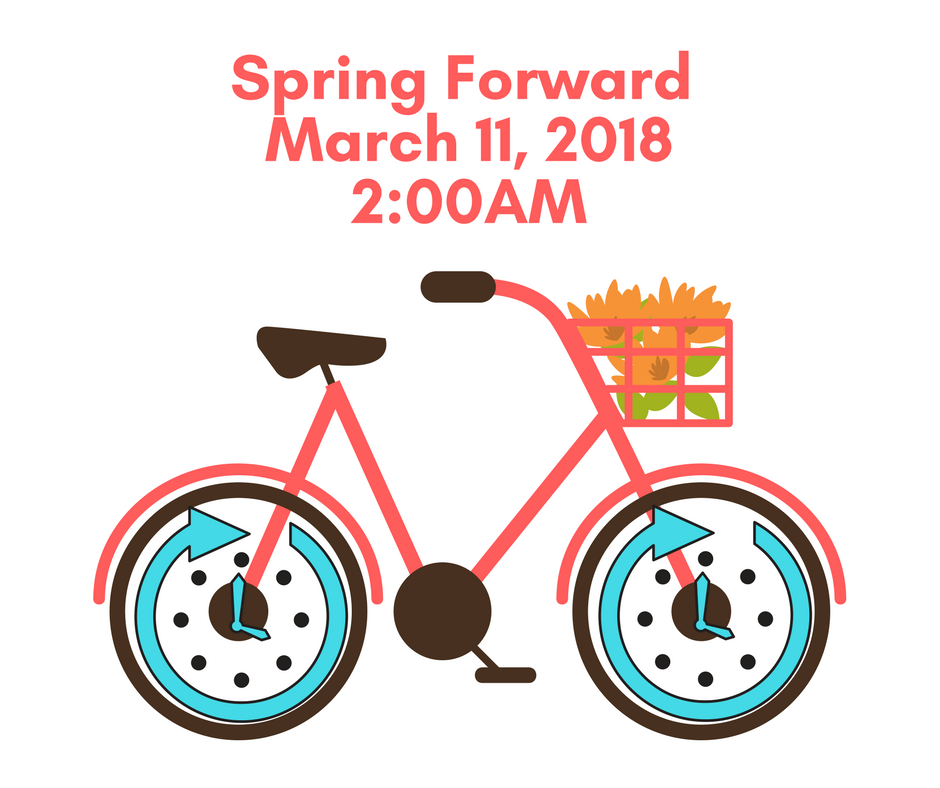This year daylight saving time begins on March 11 at 2:00 am. While the extra sunlight is welcomed and allows us to get more done and fit more exercise into our days, it also comes with a little inconvenience; we lose an hour of sleep. That might not sound that serious, but experts warn that disrupting sleep patterns comes with a few risks. For example the number of heart attacks increases and the number of traffic accidents is higher the day after the time change. Don’t worry though; there are some things you can do to avoid getting hurt so that you can simply delight in the fact that more sunlight is on its way!
- Try to go bed 15 minutes earlier for few days leading to the time change – this will give your body a chance to get used to the change gradually
- Be alert on the road – sleep deprivation is common after the time change and it can lead to traffic accidents
- Put the phone down – don’t drive, bike, or walk distracted
- If you have the option, work from home after the time change – this way you avoid distracted drivers and avoid being a drowsy driver
- Exercise with care – if you have chronic heart disease and have been inactive for a while, take it easy, start with a slow 30 minute walk
Daylight saving time is also a great reminder to tune up your bike for spring – check your tires, gears, nuts and bolts, or take it to a shop for a tune up. And a great reminder to check your smoke alarms, CO2 detectors, and get rid of unwanted medicines.
Stay safe and stay tuned!
Sources:
https://www.cbsnews.com/news/simple-tips-to-help-you-spring-forward-smoothly-daylight-saving-time/
https://www.insurancehotline.com/spring-forward-driver-safety-tips/
https://www.vox.com/science-and-health/2017/3/10/14883576/daylight-saving-time-2017-start-spring-forward
http://www.nsc.org/learn/Pages/safety-events-spring-forward-with-safety.aspx

